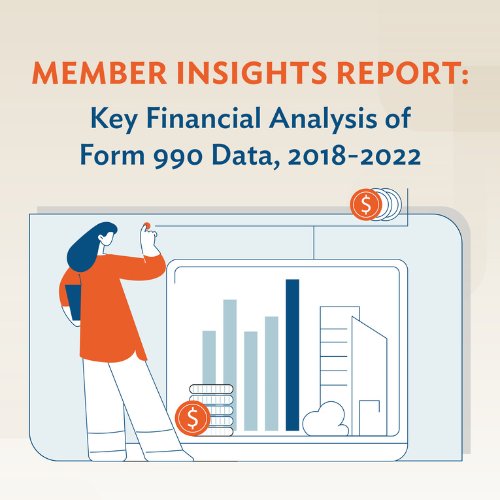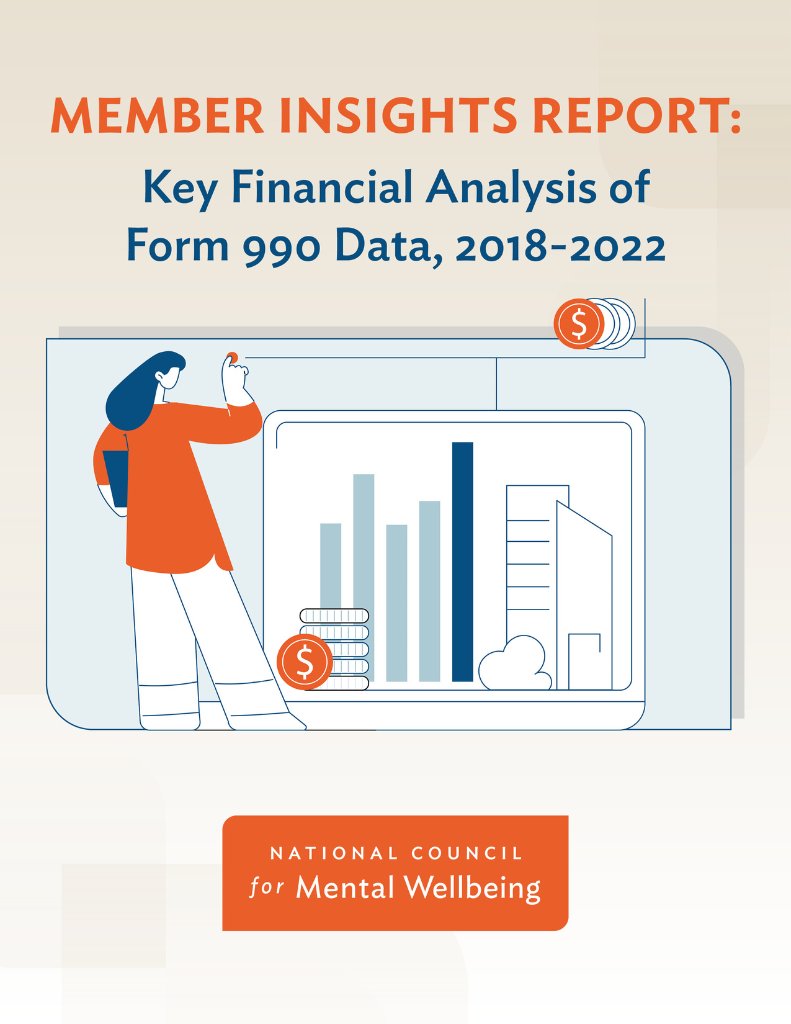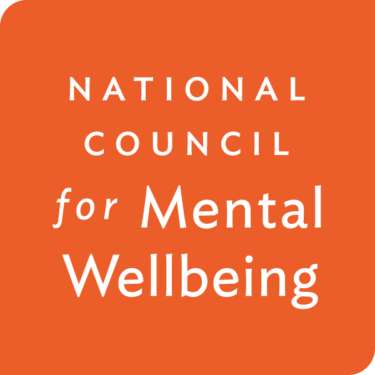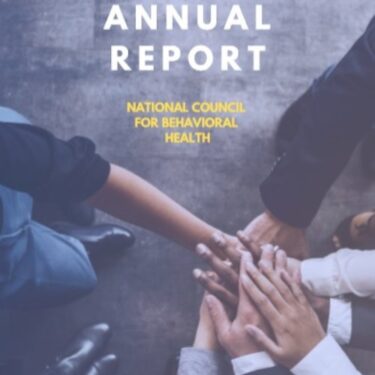2023 Annual Member Insights Report

The enhanced Annual Member Insights Report: Analysis of Form 990 Data, 2018-2022 and Other Sources is part of the National Council’s continued commitment to support the fiscal health of our members. Utilizing five years of IRS Form 990 data, this report provides our members with benchmarking resources and allows others to better understand the intricacies of community mental health and substance use treatment services.
We encourage all our member organizations to use this report to determine how they fare on key financial measures compared to their National Council peers, keeping in mind the unique COVID-19 pandemic context. While this report is just one source of data and pertains to a select percentage of our member base, it can directionally assist our members’ operational efforts. For historical context, view our 2022 and 2021 reports.
Key Objectives of the Report
- Objective 1. Offer a general profile of National Council member organizations across a five year-year period, from 2018–2022.
- Objective 2. Segment National Council member organizations into cohorts to enable peer-to-peer comparisons specific to financial health and other descriptive measures.
- Objective 3. Provide both internal and external audiences with insights into community mental health and substance use treatment delivery governance and operations.
What’s New this Year
- Five years of financial and descriptive data. Form 990 provides a wealth of information as a snapshot of a single year. To form a better overall picture, it is good practice to review multiple years of data. Moreover, looking across 2018–2022 provides important insight into the effects of the COVID-19 pandemic on members’ financial health, workforce and operational excellence.
- Condensed report with targeted focus. Analyses revealed that much data stayed consistent over the years with little to no change. We’ve retained only the most meaningful data to our members with a commitment to make the report more accessible and user friendly.
- Spotlight on workforce data. Analyses across the cohorts for metrics related to employees, compensation and fringe benefits –and work supported by contractors – have been combined into one section for ease of access.
Key Market Segmentation
Financial and descriptive data is segmented as:
- Member Agencies by Revenue Cohorts
- Member Agencies: CCBHCs, by Revenue Cohorts
- Member Agencies within Rural Areas, by Geographic Region
- Non-member Mental Health and Substance Use Treatment Agencies, by Revenue Cohorts (Market Data Comparison)
Key Audience Takeaways
For Executive/Leadership/Board of Directors:
- Access a peer-to-peer comparison to understand cohort and sector shifts in workforce makeup, benefit provision and financial landscape.
- Use this data to help describe the experience of treatment organizations in the field, for multiple audiences.
For Finance Professionals:
- Access a peer-to-peer comparison to understand cohort and sector shifts in revenue and income, income diversification and distribution of costs.
- Benchmark your organization’s growth and financial decision-making across multiple years, including the first year of the COVID-19 pandemic.
For Partners and Collaborators:
- Gain financial insights based on geography, rural status and facility type, as well as perspective into the distribution of contracted services.
Table of Contents
Background
- About this report
- Objectives of the report
- How to use this report
Part I. Overview of National Council Membership
- Member organizations by revenue cohorts
- Summary of association executives survey
Part II. Financial Health
- Revenue and income
- Program and services financial health
Part III. Workforce
- Employees
- Personnel expense ratio
- Compensation and fringe expenses
- Work supported by contractors
Part IV. Highlights
- Certified Community Behavioral Health Clinics highlight
- Member organizations serving rural areas highlight
- Market data highlight
Want to learn more? Get your free copy today!



![Screenshot 2022-02-15 at 10-19-58 https www thenationalcouncil org api do=attachment name=legacy-excellence-impact index=0 [...]](https://www.thenationalcouncil.org/wp-content/uploads/2022/02/Screenshot-2022-02-15-at-10-19-58-https-www-thenationalcouncil-org-api-doattachment-namelegacy-excellence-impact-index0-...-375x293.png)
